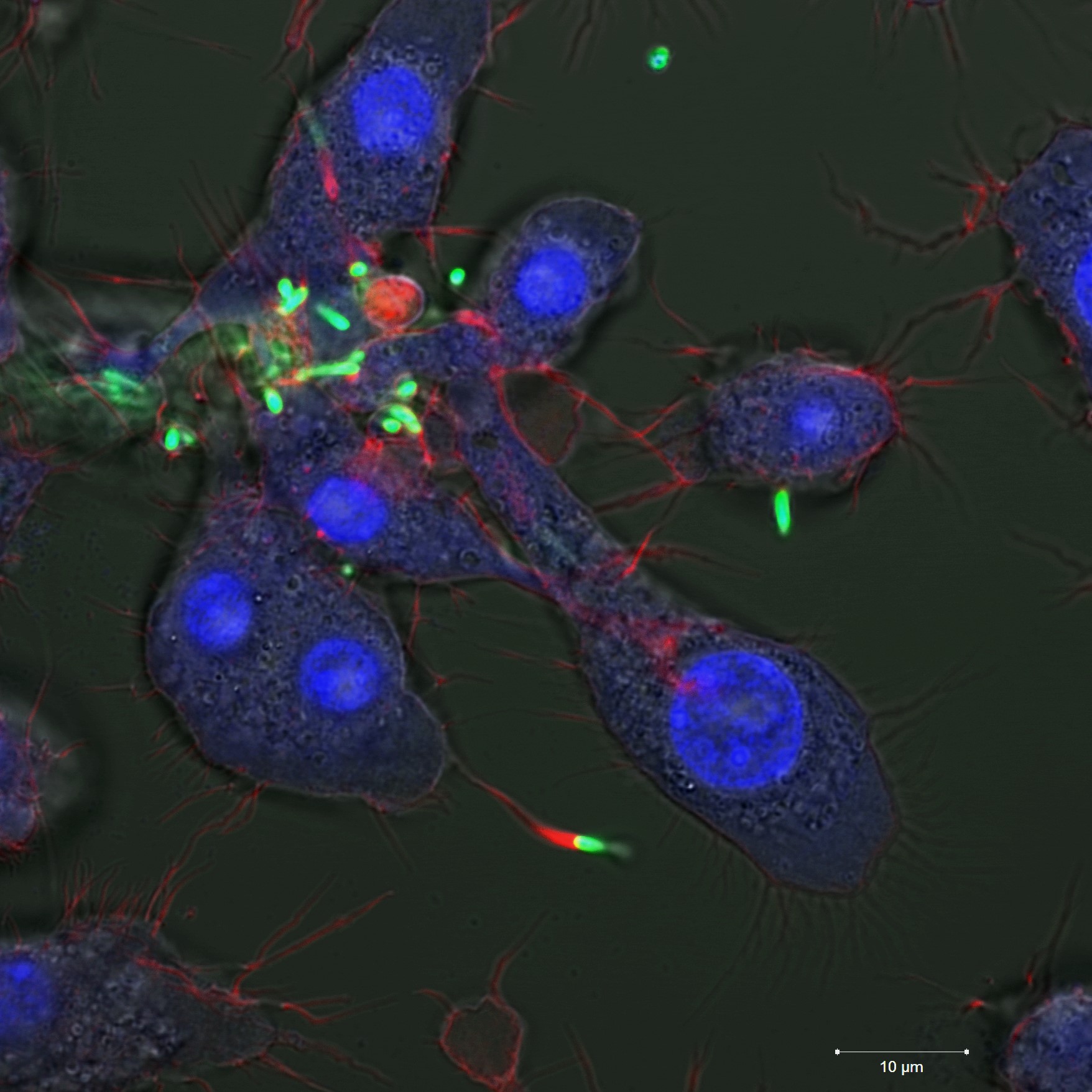Southampton researchers kill bugs with nanoparticles

Researchers from the University of Southampton, working with colleagues at the Defence Science and Technology Laboratory (DSTL) at Porton Down, have developed a new technology based on nanoparticles to kill dangerous bacteria that hide inside our cells.
Burkholderia is a genus of bacterium that causes a deadly disease called melioidosis. This disease kills many tens of thousands of people each year, particularly in southeast Asia. Antibiotics often don’t work very well against it as the bacteria hide away and grow in white blood cells called macrophages.
The researchers, led by Dr Nick Evans and Dr Tracey Newman, showed that tiny capsules called polymersomes – which are about 1000th the diameter of a human hair – could be used to carry bug-killing antibiotics right to the site where the bacteria grow inside the cells.
Eleanor Porges, a PhD student in the Faculty of Medicine and first author on the study said: “What’s so attractive about this technology is that the antibiotics are only released when they get to the place they’re needed. We hope by doing this we may be able to use less antibiotic and to even repurpose antibiotics that wouldn’t normally be considered effective.”
Dr Nick Evans added: “The results of our study were a real team effort, with people all pulling together from backgrounds in microbiology, imaging and nanotechnology working between DSTL and Southampton. This is what made the data so compelling. We are developing this towards clinical application.”
The research is published in the journal ACS Nano.